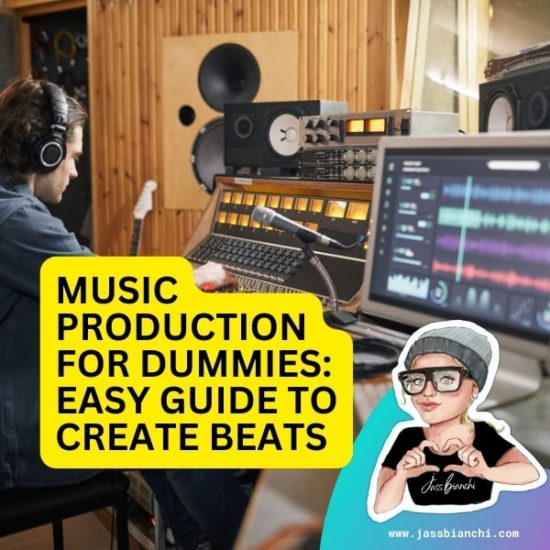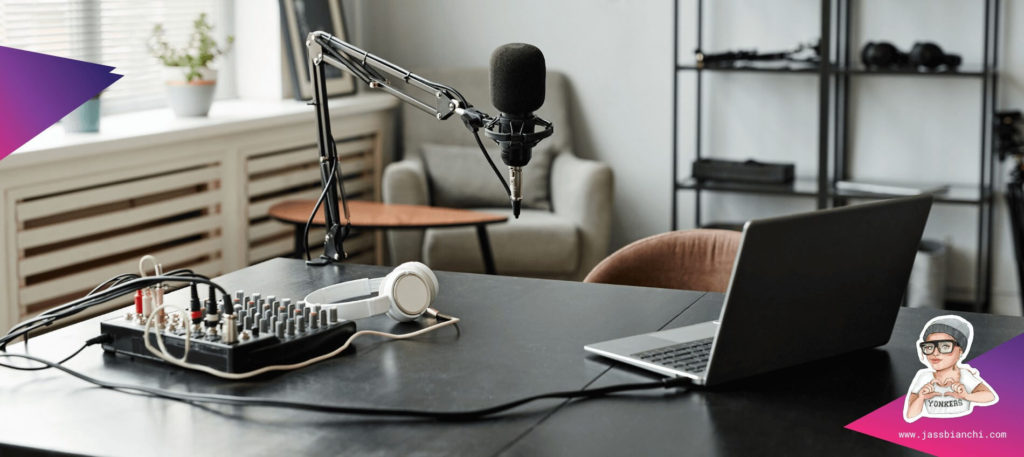
Music Production for Dummies: Easy Guide to Create Beats
Starting the journey of music production can be daunting, especially for beginners. The world of music production is vast, with its language, tools, and techniques. Yet, with the right guidance and a willingness to learn, anyone can dive into this exciting realm. In this blog, we’ll walk through the basics of music production, step-by-step. Let’s break down the process into manageable chunks that even beginners can grasp.
Understanding the Basics

Master the fundamentals of music production with this beginner’s guide.
Before diving into music production, it’s essential to understand the basic concepts. These concepts form the foundation of music production. These will later help you communicate with other producers and musicians. Understanding the basics of music production lays the groundwork for your music journey. It involves familiarizing yourself with fundamental concepts like;
- Beats
- Bars
- Tempo
- Melody
- Harmony and arrangement.
Beats and bars dictate the rhythm and structure of your music, while tempo sets the pace. Melody refers to the sequence of musical notes that form the main theme of a piece. Harmony involves the combination of different musical elements to create a pleasing sound. Arrangement is the organization of these elements into a cohesive structure. It shapes the flow and dynamics of your composition. You’ll gain the understanding necessary to communicate by grasping these basic concepts. As well as it will help you lay the foundation for your creative endeavors in music production.
Setting Up Your Workspace

Setting Up Your Workspace
Setting up your workspace is the first step towards a productive music journey. Your workspace should be conducive to creativity and focus. Arrange your equipment in an ergonomic and functional layout. Consider factors like cable management and accessibility. Personalize your space with inspiring decor. Keep your workspace organized and clutter-free to lessen distractions and maximize productivity. With a designed workspace, you’ll be ready to dive into music production with focus. and enthusiasm. Create a dedicated workspace; a corner of your house, for your music production. This could be a spare room, a corner of your bedroom, or even a cozy nook in your living room. Make sure your workspace is equipped with essential tools. It must be including;
- A computer or laptop
- A digital audio workstation (DAW) such as Ableton Live or FL Studio
- Studio monitors or headphones and
- MIDI controllers if available.
Learning Your Digital Audio Workstation (DAW)

Mastering your DAW is key to becoming a proficient music producer.
Knowing your Digital Audio Workstation (DAW) is crucial for learning how to make music. Think of your DAW as the main tool you’ll use to create, edit, and organize your music. The DAW is your central hub for music production. Here, you’ll record, arrange, mix, and master your tracks. Take the time to familiarize yourself with your DAW’s interface, features, and workflow. Many DAWs offer tutorials and online resources to help you get started. When you first open your DAW, take some time to look around and see what everything does. Most DAWs come with guides or videos to help you figure things out, so don’t hesitate to check those out. Start by trying out simple stuff like recording your voice or playing around with sounds. As you get more comfortable, you can try out fancier things like adding effects or making your beats. Don’t worry if it feels overwhelming at first. Take it one step at a time and have fun experimenting. The more you play around with your DAW, the more you’ll learn, and soon you’ll be making your awesome music like a pro.
Creating Beats and Rhythms

Crafting beats is a fundamental aspect of music production.
Creating beats and rhythms is all about making the heartbeat of your music. It’s like building the foundation of a house. You want it to be solid and catchy. Start by experimenting with different sounds. Try new patterns until you find something you like. You can use pre-made drum loops. Or try your hand at programming your beats using virtual drum kits or MIDI controllers. Think about the vibe you want your music to have—is it upbeat and energetic, or chill and laid-back? Adjust the tempo and groove. Don’t be afraid to get creative with your rhythms. Add in unexpected accents and patterns to keep things interesting. And remember, practice makes perfect. So keep experimenting and refining your beats until they’re just right. Start by laying down the foundation of your track with beats and rhythms. Pay attention to the feel of your beats. These elements are crucial for engaging your listeners. Before you know it, you’ll have a killer rhythm section that’ll get people grooving along to your tunes.
Adding Melodies and Harmonies

Crafting melodies and harmonies brings depth to your music compositions.
Now it’s time to add some melody and harmony to your music. This is where things start to come alive! This could involve recording live instruments, using virtual instruments, or programming MIDI sequences. Melody is like the catchy tune that gets stuck in your head. Harmony is the magic that happens when different notes come together to create a rich sound. You can start by playing around with virtual sounds to find melodies that resonate with you. Don’t worry if you’re not a musical genius. Trust your guts and ears and go with what sounds good to you. When it comes to harmony, think about how different notes can complement each other. Think about how can they be used to create depth and texture. You can experiment with chords, arpeggios, or even single notes played in sequence. And don’t forget to have fun with it. Music is all about expressing yourself and letting your creativity flow. Experiment with melodies and harmonies to find your perfect combination.
Conclusion
Music production is a rewarding journey. It offers endless opportunities for creativity and self-expression. Beginners can also produce music with this step-by-step guide. So don’t be afraid to dive in, experiment, and most importantly, have fun along the way!








